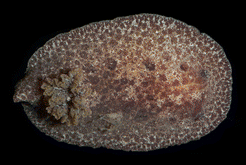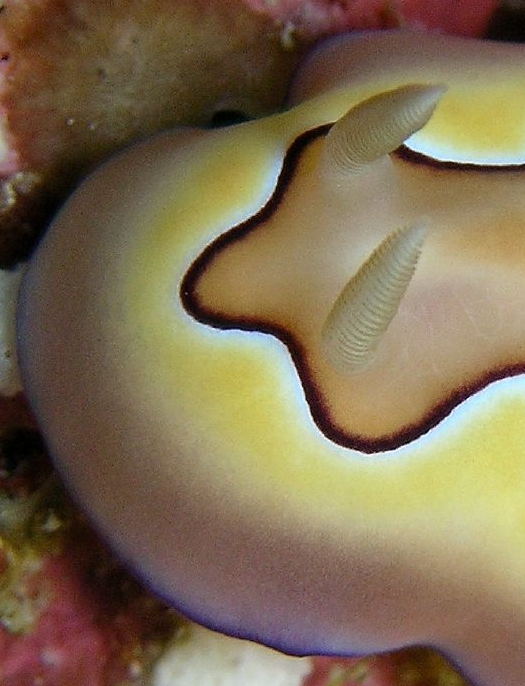|
Discodoris Branneri
''Discodoris branneri'' is a species of sea slug, a dorid nudibranch, shell-less marine gastropod mollusks in the family Discodorididae.Gofas, S.; Bouchet, P.; Rosenberg, G. (2014)''Discodoris branneri'' MacFarland, 1909.Accessed through: World Register of Marine Species on 2015-03-06 Distribution The distribution of ''Discodoris branneri'' includes Florida, Texas, Costa Rica, Honduras, Panama, Colombia, Venezuela, Bahamas, Cayman Islands, Puerto Rico, Jamaica, Barbados, Martinique, St. Lucia, Guadeloupe, St. Vincent and the Grenadines, Brazil. Description The body is oval, moderately rigid. Dorsum is covered by numerous conical tubercles. Background color is variable, from cream to purplish brown, sometimes with black or white patches and spots. Rhinophores and gill are usually the same color as the dorsum with white tips. The maximum recorded length is 110 mm.Welch J. J. (2010). "The "Island Rule" and Deep-Sea Gastropods: Re-Examining the Evidence". '' PLoS ONE'' 5( ... [...More Info...] [...Related Items...] OR: [Wikipedia] [Google] [Baidu] |
Frank Mace MacFarland
Frank Mace MacFarland (1869–1951) was an American malacologist associated with Stanford University in California. Born in Centralia, Illinois, MacFarland attended DePauw University (A.B. 1889), Stanford University (A.M., 1893) and the University of Wurzburg (PhD, 1896). On August 27, 1902, MacFarland married Olive Knowles Hornbrook (b.30 June 1872, West Virginia; B.L. 1893, Ohio Wesleyan University; A.B. 1908, Stanford; d. 1 May 1962, San Mateo, California). Mrs. MacFarland was a skilled technician and artist whose delicate watercolor paintings illustrated many of his scientific publications. Frank MacFarland was an authority on the life and habits of nudibranchs and he left unfinished a comprehensive monograph on the group which was published posthumously in 1966. He played a leading role in organizing the Hopkins Seaside Laboratory (now Hopkins Marine Station) in Pacific Grove, California, of which he was in charge from 1910 to 1913 and co-director from 1915 to 1917, and in ... [...More Info...] [...Related Items...] OR: [Wikipedia] [Google] [Baidu] |
Species
In biology, a species is the basic unit of Taxonomy (biology), classification and a taxonomic rank of an organism, as well as a unit of biodiversity. A species is often defined as the largest group of organisms in which any two individuals of the appropriate sexes or mating types can reproduction, produce Fertility, fertile offspring, typically by sexual reproduction. Other ways of defining species include their karyotype, DNA sequence, morphology (biology), morphology, behaviour or ecological niche. In addition, paleontologists use the concept of the chronospecies since fossil reproduction cannot be examined. The most recent rigorous estimate for the total number of species of eukaryotes is between 8 and 8.7 million. However, only about 14% of these had been described by 2011. All species (except viruses) are given a binomial nomenclature, two-part name, a "binomial". The first part of a binomial is the genus to which the species belongs. The second part is called the specifi ... [...More Info...] [...Related Items...] OR: [Wikipedia] [Google] [Baidu] |
Sea Slug
Sea slug is a common name for some marine invertebrates with varying levels of resemblance to terrestrial slugs. Most creatures known as sea slugs are gastropods, i.e. they are sea snails (marine gastropod mollusks) that over evolutionary time have either completely lost their shells, or have seemingly lost their shells due to having a greatly reduced or internal shell. The name "sea slug" is most often applied to nudibranchs, as well as to a paraphyletic set of other marine gastropods without obvious shells. Sea slugs have an enormous variation in body shape, color, and size. Most are partially translucent. The often bright colors of reef-dwelling species implies that these animals are under constant threat of predators, but the color can serve as a warning to other animals of the sea slug's toxic stinging cells ( nematocysts) or offensive taste. Like all gastropods, they have small, razor-sharp teeth, called radulas. Most sea slugs have a pair of rhinophores—sens ... [...More Info...] [...Related Items...] OR: [Wikipedia] [Google] [Baidu] |
Nudibranch
Nudibranchs () are a group of soft-bodied marine gastropod molluscs which shed their shells after their larval stage. They are noted for their often extraordinary colours and striking forms, and they have been given colourful nicknames to match, such as "clown", "marigold", "splendid", "dancer", "dragon", or "sea rabbit". Currently, about 3,000 valid species of nudibranchs are known.Ocean Portal (2017)A Collage of Nudibranch Colors Smithsonian National Museum of Natural History. Retrieved 17 April 2018. The word "nudibranch" comes from the Latin "naked" and the Ancient Greek () " gills". Nudibranchs are often casually called sea slugs, as they are a family of opistobranchs (sea slugs), within the phylum Mollusca (molluscs), but many sea slugs belong to several taxonomic groups which are not closely related to nudibranchs. A number of these other sea slugs, such as the photosynthetic '' Sacoglossa'' and the colourful Aglajidae, are often confused with nudibranchs. Dist ... [...More Info...] [...Related Items...] OR: [Wikipedia] [Google] [Baidu] |
Marine (ocean)
The ocean (also the sea or the world ocean) is the body of salt water that covers approximately 70.8% of the surface of Earth and contains 97% of Earth's water. An ocean can also refer to any of the large bodies of water into which the world ocean is conventionally divided."Ocean." ''Merriam-Webster.com Dictionary'', Merriam-Webster, [...More Info...] [...Related Items...] OR: [Wikipedia] [Google] [Baidu] |
Gastropod
The gastropods (), commonly known as snails and slugs, belong to a large taxonomic class of invertebrates within the phylum Mollusca called Gastropoda (). This class comprises snails and slugs from saltwater, from freshwater, and from land. There are many thousands of species of sea snails and slugs, as well as freshwater snails, freshwater limpets, and land snails and slugs. The class Gastropoda contains a vast total of named species, second only to the insects in overall number. The fossil history of this class goes back to the Late Cambrian. , 721 families of gastropods are known, of which 245 are extinct and appear only in the fossil record, while 476 are currently extant with or without a fossil record. Gastropoda (previously known as univalves and sometimes spelled "Gasteropoda") are a major part of the phylum Mollusca, and are the most highly diversified class in the phylum, with 65,000 to 80,000 living snail and slug species. The anatomy, behavior, feeding, a ... [...More Info...] [...Related Items...] OR: [Wikipedia] [Google] [Baidu] |
Mollusk
Mollusca is the second-largest phylum of invertebrate animals after the Arthropoda, the members of which are known as molluscs or mollusks (). Around 85,000 extant species of molluscs are recognized. The number of fossil species is estimated between 60,000 and 100,000 additional species. The proportion of undescribed species is very high. Many taxa remain poorly studied. Molluscs are the largest marine phylum, comprising about 23% of all the named marine organisms. Numerous molluscs also live in freshwater and terrestrial habitats. They are highly diverse, not just in size and anatomical structure, but also in behaviour and habitat. The phylum is typically divided into 7 or 8 taxonomic classes, of which two are entirely extinct. Cephalopod molluscs, such as squid, cuttlefish, and octopuses, are among the most neurologically advanced of all invertebrates—and either the giant squid or the colossal squid is the largest known invertebrate species. The ... [...More Info...] [...Related Items...] OR: [Wikipedia] [Google] [Baidu] |
Discodorididae
Discodorididae is a taxonomic family of sea slugs, specifically dorid nudibranchs, marine gastropod mollusks in the superfamily Doridoidea.Bouchet, P. (2011). Discodorididae. Accessed through: World Register of Marine Species at http://www.marinespecies.org/aphia.php?p=taxdetails&id=1761 on 2011-08-23 Species in this family belong to the cryptobranch dorid nudibranchs, i.e. they are able to retract their gills into a gill pocket (cryptobranch = hidden gills). Most are small and hard to identify. Most are thought to feed at night on sponges, while during the day they search for dark areas or remain hidden under rocks. One example of a discodoridid is the "Pacific sea lemon" or "speckled sea lemon", ''Peltodoris nobilis'', which occurs off the coast of British Columbia to Baja California from low-tide waters to a depth of about 200 m. Not only is this species yellow with a bumpy surface, but it also gives off a strong fruity citrus smell when handled, adding to its resembl ... [...More Info...] [...Related Items...] OR: [Wikipedia] [Google] [Baidu] |
Discodoris Branneri 2
''Discodoris'' is a genus of sea slugs, dorid nudibranchs, shell-less marine gastropod molluscs in the family Discodorididae.W Gofas, S. (2011)''Discodoris''.Accessed through: World Register of Marine Species on 2011-08-23 Species Species in the genus ''Discodoris'' include:Valdés Á. (2002). A phylogenetic analysis and systematic revision of the cryptobranch dorids (Mollusca, Nudibranchia, Anthobranchia). Zoological Journal of the Linnean Society 136: 535-636 * ''Discodoris achroma'' Valdés, 2001 * ''Discodoris aurila'' Marcus & Marcus, 1967 * ''Discodoris boholiensis'' Bergh, 1877 * ''Discodoris branneri'' MacFarland, 1909 * '' Discodoris cebuensis'' Bergh, 1877 * ''Discodoris coerulescens'' Bergh, 1888 * ''Discodoris concinna'' Alder & Hancock, 1864 (nomen dubium) * ''Discodoris edwardsi'' Vayssière, 1902 (taxon inquirendum) * ''Discodoris erubescens'' Bergh, 1884 * ''Discodoris ghanensis'' Edmunds, 2011 * '' Discodoris glabella'' (Bergh, 1907) * ''Discodoris hummelin ... [...More Info...] [...Related Items...] OR: [Wikipedia] [Google] [Baidu] |
Rhinophores
A rhinophore is one of a pair of chemosensory club-shaped, rod-shaped or ear-like structures which are the most prominent part of the external head anatomy in sea slugs, marine gastropod opisthobranch mollusks such as the nudibranchs, sea hares (Aplysiomorpha), and sap-sucking sea slugs (Sacoglossa). Etymology The name relates to the rhinophore's function as an organ of "smell". ''Rhino-'' means nose from Ancient Greek ῥίς ''rhis'' and from its genitive ῥινός ''rhinos''. "Phore" means "to bear" from New Latin ''-phorus'' and from Greek -phoros (φορος) "bearing", a derivative of ''phérein'' (φέρειν). Function Rhinophores are scent or taste receptors, also known as chemosensory organs situated on the dorsal surface of the head. They are primarily used for distance chemoreception and rheoreception (response to water current). The "scents" detected by rhinophores are chemicals dissolved in the sea water. The fine structure and hairs of the rhinophore ... [...More Info...] [...Related Items...] OR: [Wikipedia] [Google] [Baidu] |
Sponges
Sponges, the members of the phylum Porifera (; meaning 'pore bearer'), are a basal animal clade as a sister of the diploblasts. They are multicellular organisms that have bodies full of pores and channels allowing water to circulate through them, consisting of jelly-like mesohyl sandwiched between two thin layers of cells. Sponges have unspecialized cells that can transform into other types and that often migrate between the main cell layers and the mesohyl in the process. Sponges do not have nervous, digestive or circulatory systems. Instead, most rely on maintaining a constant water flow through their bodies to obtain food and oxygen and to remove wastes. Sponges were first to branch off the evolutionary tree from the last common ancestor of all animals, making them the sister group of all other animals. Etymology The term ''sponge'' derives from the Ancient Greek word ( 'sponge'). Overview Sponges are similar to other animals in that they are multicellula ... [...More Info...] [...Related Items...] OR: [Wikipedia] [Google] [Baidu] |







